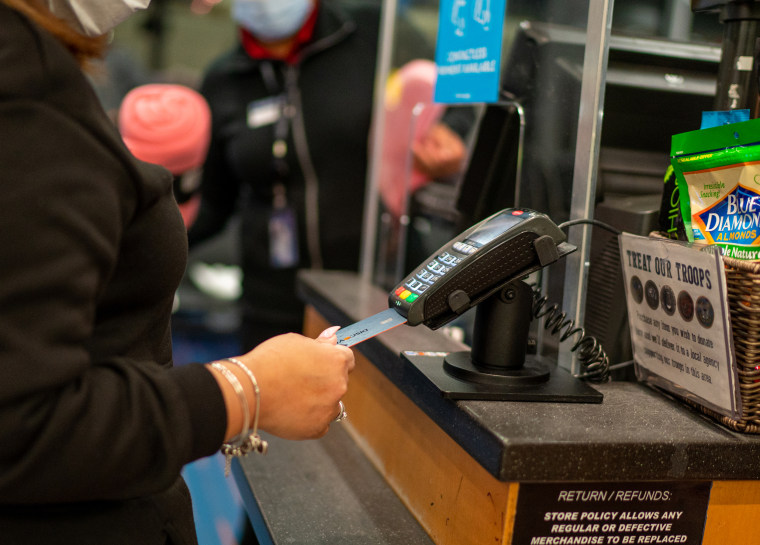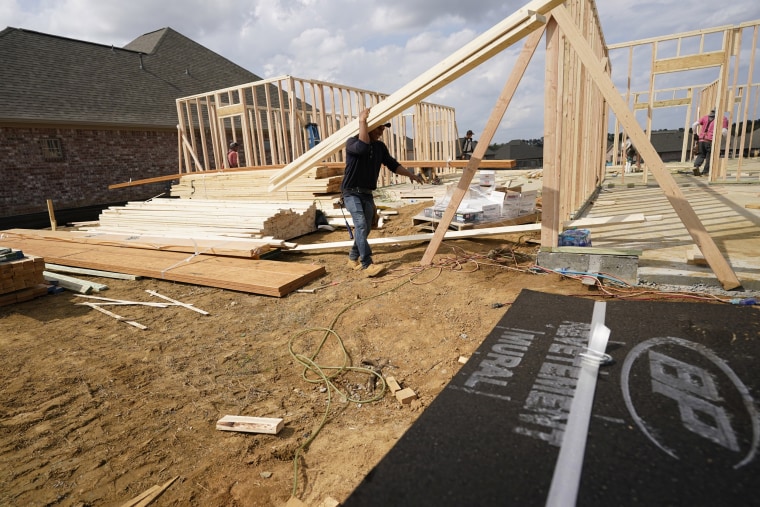The Federal Reserve announced a quarter-percentage point interest rate increase Wednesday — nearly two years to the day after the central bank slashed its benchmark federal funds rate to zero in a bid to cushion the blow of a deep recession triggered when the United States shut down in the early days of the pandemic.
"It's clearly time to raise interest rates," Fed chairman Jerome Powell said at a press conference following the conclusion of a two-day meeting at the central bank.
The Fed said it would raise the federal funds rate to a range of 0.25- 0.50 percent, a move that is likely just the kickoff of a lengthier rate hike cycle. The CME FedWatch Tool projects a roughly 35 percent chance that the benchmark rate will be between 1.75 to 2 percent by the end of the year.
Looking further ahead, there is less certainty — but the expectation is for more incremental rate increases. By the Fed’s July 2023 meeting, there is roughly a 50 percent probability it will be somewhere in a range between 2.25-2.75 percent.
In relative terms, this is still a low benchmark, but experts say it could still have profound effects on the consumer spending that powers roughly 70 percent of the American economy. Credit card borrowers, homebuyers and small-business owners need to be prepared for the era of cheap money to come to an end, they say.
Ted Rossman, senior credit card industry analyst for Bankrate.com, said credit card holders who revolve balances from month to month will be among the first to notice the effects of tighter monetary policy. “Rate hikes are passed through on existing debt pretty much right away, within a month or two,” he said.
Despite the Fed holding rates near zero for the past two years, the current average credit card annual percentage rate or APR is already within 2 percentage points of its April 2019 record high of just under 18 percent. “They’ve been padding margins in recent years,” he said.
Rossman predicted the Fed’s path to rate normalization will send those APRs even higher.
“We could well be at a new record by the end of the year,” he said. “Market participants seem to be pricing in perhaps seven quarter-percentage-point hikes,” he said. “So if that happens, that could take the average credit card rate to [more than] 18 percent.”
Rossman said the minimum payments don’t change very much with these rate hikes, about a dollar a month per quarter percentage point on the average credit card balance, which sits at just over $5,500, according to the credit bureau Experian.

But the policy shift should be a wake-up call for borrowers who are already paying dearly to service their outstanding balances. “It almost doesn’t matter if it’s 16 or 17 or 18 percent,” he said. “The big point is they’re already high.”
Mortgage borrowers will also feel the squeeze. “Higher mortgage rates will make homebuying even more difficult than it already is in the current housing boom,” Steve Rick, chief economist at CUNA Mutual Group, warned in a research note. “It will keep more Americans from accumulating wealth through real estate,” he said.
“The housing market is always sensitive to changes in interest rates,” said Lawrence Yun, chief economist at the National Association of Realtors. For example, a $300,000 mortgage at a 5 percent interest rate would cost nearly $350 more per month than the same principal borrowed at a 3 percent interest rate.
“These are quite sizable changes, especially for the first-time buyers,” he said. “Suddenly, they’re squeezed out of the market.”
Mortgage rates, which reflect the underlying rate environment but aren’t as tightly correlated with Fed activity as credit card APRs, have already been ticking up, but so far the increases have not been large enough to rein in the ballooning cost of housing. The February Consumer Price Index released last week found that shelter costs incurred their steepest annual jump since 1991.
Yun said higher mortgage costs are especially tough for minority prospective homeowners to shoulder. “Many African American homeowners are essentially first-time buyers. Hispanic buyers are in a similar situation,” he said. A large contingent of these would-be buyers lack the generational wealth or existing home equity that can help mitigate rising housing costs.

“Generally speaking, rising rates would hurt minority households more so, given the dynamics of who are renters and who are homeowners,” Yun said.
Higher interest rates also have implications for small-business owners, particularly among these same populations: groups that historically have struggled to obtain access to nonpredatory financing.
Della Clark, president and CEO of The Enterprise Center, a resource organization for minority entrepreneurs, said owners already operating on shoestring budgets and buffeted by rising costs across the board have little buffer against climbing interest rates.
“The majority of America’s entrepreneurs are from low-wealth communities which means … they have little cash reserves for their business,” she said. A 2019 report by the Federal Reserve Bank of Atlanta found that a lack of opportunities to borrow affordably is a major culprit in what it termed the “lower profits and higher closure rates” minority-owned small-businesses experience.
“This is where the racial and equity gap in capital plays a significant part in the ability of these small businesses to stay in business and to grow,” Clark said. “The cost of money — the cost of capital — is very important to them.”
Rossman said consumers and small-business owners should view the next few months as a closing window of opportunity to lock in favorable terms and pay down high-interest debt before rates start climbing in earnest. Borrowers with good credit scores and financial discipline might be able to free up more money to pay down their outstanding balances by applying for a credit card with low- or no-interest promotional periods on balance transfers, he said.
If the Fed does implement seven rate hikes this year, people with debts could find their dollars not stretching as far as they used to. On the average credit card balance, a fed funds rate of 1.75 percent as opposed to zero would tack an extra four months onto the payoff timeline for a borrower making only minimum payments, and add an extra $732 in interest.
“It’s just a good reminder to pay down those balances,” Rossman said.